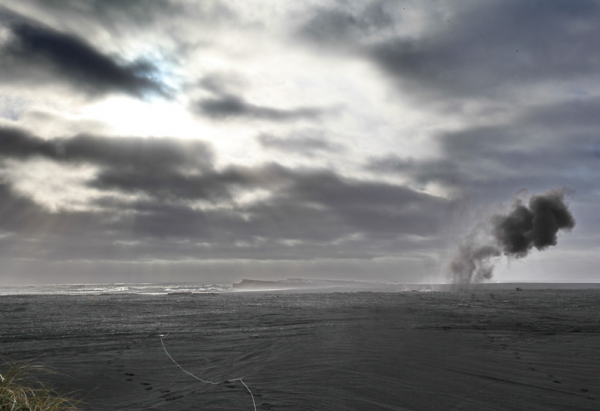People, if you see on your travels along Iceland’s coastline, an object similar to the one on the picture above, don’t touch it, keep a safe distance and contact The Icelandic Coast Guard (ICG).
This is a sea mine laid by the British navy during the Second World War and was found (link in Icelandic) late Thursday night in South Iceland.
Mines like this are still being found now and again on the shore’s of Iceland, or being caught in the nets of Icelandic fishing vessels, more than 70 years after being placed in the ocean southeast of Iceland.
Read more: Bomb squad alert: An Icelandic fishing vessel catches a World War 2 sea mine in its nets
It is believed that from 1940 to 1943 the British navy laid close to 100 thousand sea mines between Iceland and the Faroe Islands creating an extensive minefield. German marines nicknamed the area Rosengarten or the Rose Garden during the war. Naval mines are deposited and left to wait until they are triggered by the approach of, or contact with a ship or a submarine.
This mine was half buried on the banks of a river close to the coast line, not far from town Höfn in Hornafjörður. The person who found it did the right thing and called ICG, which sent out its bomb squad.
Thankfully the mine’s ignition device was not working but taking no chance the bomb squad safely got rid of it by blowing it up from a safe distance.

People, if you see on your travels along Iceland’s coastline, an object similar to the one on the picture above, don’t touch it, keep a safe distance and contact The Icelandic Coast Guard (ICG).
This is a sea mine laid by the British navy during the Second World War and was found (link in Icelandic) late Thursday night in South Iceland.
Mines like this are still being found now and again on the shore’s of Iceland, or being caught in the nets of Icelandic fishing vessels, more than 70 years after being placed in the ocean southeast of Iceland.
Read more: Bomb squad alert: An Icelandic fishing vessel catches a World War 2 sea mine in its nets
It is believed that from 1940 to 1943 the British navy laid close to 100 thousand sea mines between Iceland and the Faroe Islands creating an extensive minefield. German marines nicknamed the area Rosengarten or the Rose Garden during the war. Naval mines are deposited and left to wait until they are triggered by the approach of, or contact with a ship or a submarine.
This mine was half buried on the banks of a river close to the coast line, not far from town Höfn in Hornafjörður. The person who found it did the right thing and called ICG, which sent out its bomb squad.
Thankfully the mine’s ignition device was not working but taking no chance the bomb squad safely got rid of it by blowing it up from a safe distance.








